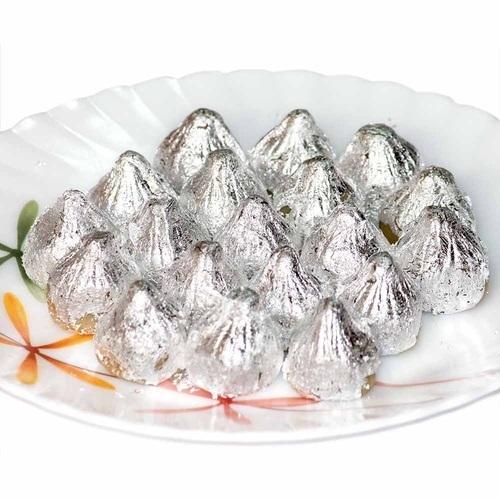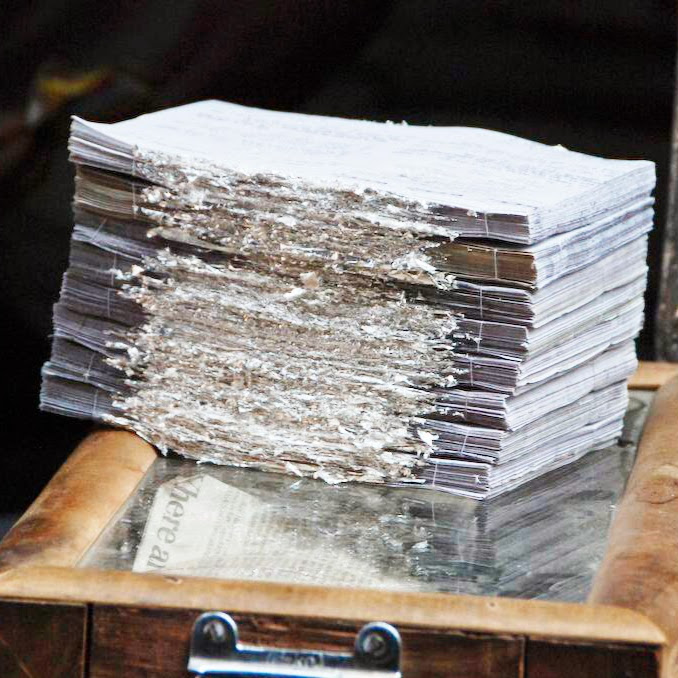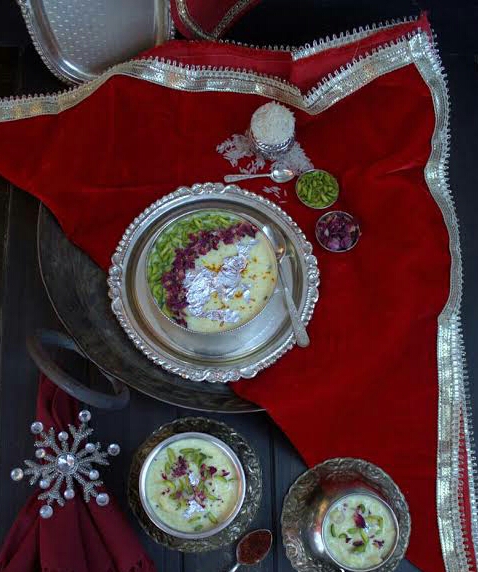Vark, also called varak (also silver leaf, German paper), is super fine filigree foil sheet of pure metals, typically silver but sometimes gold, used to decorate Indian sweets and food to make those look more appetising.silver foil, or varakh, as it is generally known in India, adds glitter to Indian sweets (mithai), supari (betel nut), paan (betel-leaf), and fruits. Also it is used in Ayurvedic medicines and on deities in many Jain temples. The silver-topped sweet is even served as prasad in temples and on auspicious and religious occasions. Varakh is also used in flavored syrups as in kesar (saffron) syrup. The silver and gold are edible, though flavourless. The silver sheets are typically packed between layers of paper for support; this paper is peeled away before use. It is fragile and breaks into smaller pieces if handled with direct skin contact. Vark sheets are laid or rolled over some Indian sweets, confectionery, dry fruits and spices. Due to the safety and ethical reasons, the government of India issued food safety and product standards guidelines for the manufacturers of the silver foil.
Etymology Of Varak
A tray of Indian sweets, with some pieces covered with shiny vark. Varaka means cloth, cloak or a thing that covers something else. Vark is sometimes spelled Varaq, varq, vark, varkh, varakh, varkha, or waraq (Hindi: वरक़, Urdu: ورق ).
Origin of Varak
The tradition of using silver and gold foils to decorate food originated from the ancient Ayurvedic practice of using precious metals and pieces of pearl and conch shell in bhasma (medicinal ash). It is also commonly used in India as a coating on dry fruits (such as almonds, cashews, and dates), and in sugar balls, betel nuts, cardamom and other spices. Cardamom-coated sweets are very commonly present in the market. Varaka is mentioned in several ancient Sanskrit documents, particularly in Ayurvedic and medical literature. The word varaka is mentioned with Swarna (gold), Tara (silver) or rupera (silver) in these documents; the discussion is in three forms of these precious metals: patra (leaf), varaka (thin foil) and bhasma (ash). Ayurvedic documents consider silver as an antimicrobial astringent, while gold is claimed to be an aphrodisiac. This is not unique to Indian subcontinent; in Europe, edible gold and silver were also claimed to have medicinal properties; later studies found that they can indeed be antibacterial owing to the oligodynamic effect.
Silver is a very malleable metal and hence could be made into sheets of extremely negligent width. In India, just as you can see aluminium foils, we have Chandi Vark ( silver foil) made by manually beating a piece of silver into thin sheets, except it is considered not just edible but also good for health.
As it is made just from silver, it is vegetarian.

The Chandi Vark on the top of sweets represents their freshness as it is considered that it doesn’t stick completely on stale sweets.
Jaipur Explore trying to find out the fact from the ground reporting.
To be continued…….








